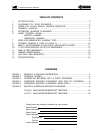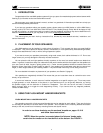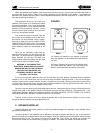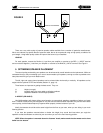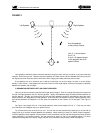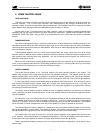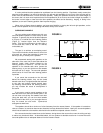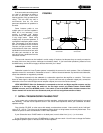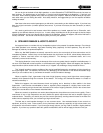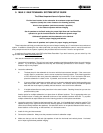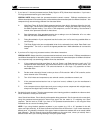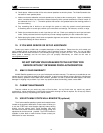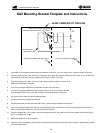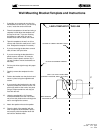
6. HOME THEATRE USAGE
LEVEL-MATCHING
The factor most critical to achieving excellent Home Theatre performance is level-matching the three front and two
surround channels. This is even more important than timbre-matching. We strongly recommend that you
purchase a Radio Shack Sound Level Meter (get the analog meter, not the digital) and use it to measure the output
of the speakers when playing the test tones generated by your processor or receiver.
Set the meter to the "C" weighting scale and “Slow” response, using your amplifier or receiver's internal noise
calibration test, set the levels so that all channels measure the same level. WHENEVER POSSIBLE, DO NOT
CALIBRATE LEVELS BY EAR! Using a meter is an inexpensive way to be certain that your system is calibrated
properly.
TIMBRE-MATCHING
One of the most important factors in achieving excellent Home Theatre performance is timbre-matching. On film
soundtracks, specific sounds are often moved from left to right or from front to back in the room. When the speakers
reproducing these sounds have dissimilar characteristics, there will be an audible discontinuity when the sound shifts
from one speaker to another.
Timbre-matched speakers have very similar tonal characteristics and sound, which come from three critical
elements: similar or identical drivers; similar or identical crossovers; and similar or identical frequency response. In full
M&K systems, these elements have been addressed. You can be assured that the system can achieve the full
potential of multichannel sound.
When you have a multichannel system, speaker placement becomes very important, as you will be balancing four
or five (or more) speakers rather than two. The following guidelines are for a 5.1 channel system, but if you do not have
a Center channel, the instructions for the other four channels still apply.
CENTER CHANNEL
The Center channel speaker in a 5.1 surround system is the most important speaker in the system. This
speaker often produces more output than the left and right speakers combined. This speaker should be of the
highest possible quality, and as similar as possible in response and radiation pattern to the left and right speakers.
Three identical speakers are best, unless the center channel is designed to work with a set of left and right speakers.
It is also important to have as much amplifier power as possible for the Center channel. As a minimum, the three
front channels should be identical in power output, but it is better if the Center channel has more. If you have less
power in the Center channel, this will be the limiting factor in the total output capability of the system when watching
and listening to multichannel sources.
The Center channel speaker should be located as close as physically possible to the television or projection
screen, preferably just above or below the screen. If that is not possible, then just to the left or the right of the screen
may be acceptable.
If the television is not in the center of the room (or not centered between the Left and Right speakers), the Center
channel speaker should still be as close as possible to the screen -- even if it is outside the left and right speakers
(such as a TV located in a corner of the room outside the stereo spread of the left and right speakers). Good results
can be achieved in unusual configurations when the Center speaker is as close as possible to the screen.
The Left and Right front channel speakers in a multichannel surround system should be placed the same as the
left and right speakers in a stereo setup. Some listeners, however, may prefer to reduce the distance between the left
and right speakers to bring the size of the acoustic image closer to the size of the screen image.
For example, with a 25" direct-view television, you would want the speakers closer together than you would with
a 100" projector. One recommendation is to separate the speakers by 1.5 times the diagonal screen size; another is
to place the left and right speakers to create a 45 degree angle with the main listening position.
There is a great deal of latitude in this area, as it is one of personal preference (especially if you will listen to music
without video).
7
K-SERIES SATELLITE SPEAKER




